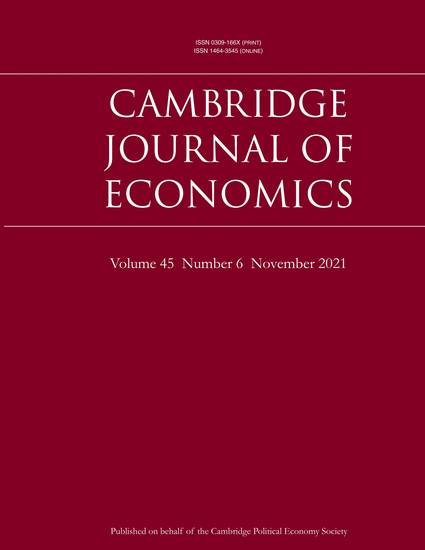
Article
What to Make of the Kaldor-Verdoorn Law?
Cambridge Journal of Economcis
(2021)
Abstract
The Kaldor-Verdoorn law refers to a positive but less than one-for-one causal relationship between the growth rates of output and labour productivity. While empirical research has found that the Kaldor-Verdoorn coefficient lies between 0 and 1, the interpretation of this finding remains unclear. In this paper, we present a model to derive the Kaldor-Verdoorn law. Our results show that the Kaldor-Verdoorn coefficient is jointly determined by the elasticity of factor substitution, labour supply elasticity, the profit share and the increasing returns to scale (or demand-induced technical change) parameter. Hence, estimated Kaldor-Verdoorn coefficients cannot be used, on their own, to infer the presence of aggregate increasing returns to scale—with the exception of the benchmark case of Leontief Production technology (and steady-state analysis coupled with the assumption of Cobb-Douglas production technology). We also report a surprising result: an economy without aggregate increasing returns to scale (or without any demand-induced technical progress) can generate a Kaldor-Verdoorn coefficient that lies between 0 and 1.
Keywords
- Aggregate productivity,
- Kaldor-Verdoorn coefficient,
- Labor supply elasticity,
- CES production function
Disciplines
Publication Date
August, 2021
Citation Information
Deepankar Basu and Manya Budhiraja. "What to Make of the Kaldor-Verdoorn Law?" Cambridge Journal of Economcis Vol. 45 Iss. 6 (2021) p. 1243 - 1268 Available at: http://works.bepress.com/deepankar_dasu/38/
